Workforce Retention Begins with Culture at Ketchie
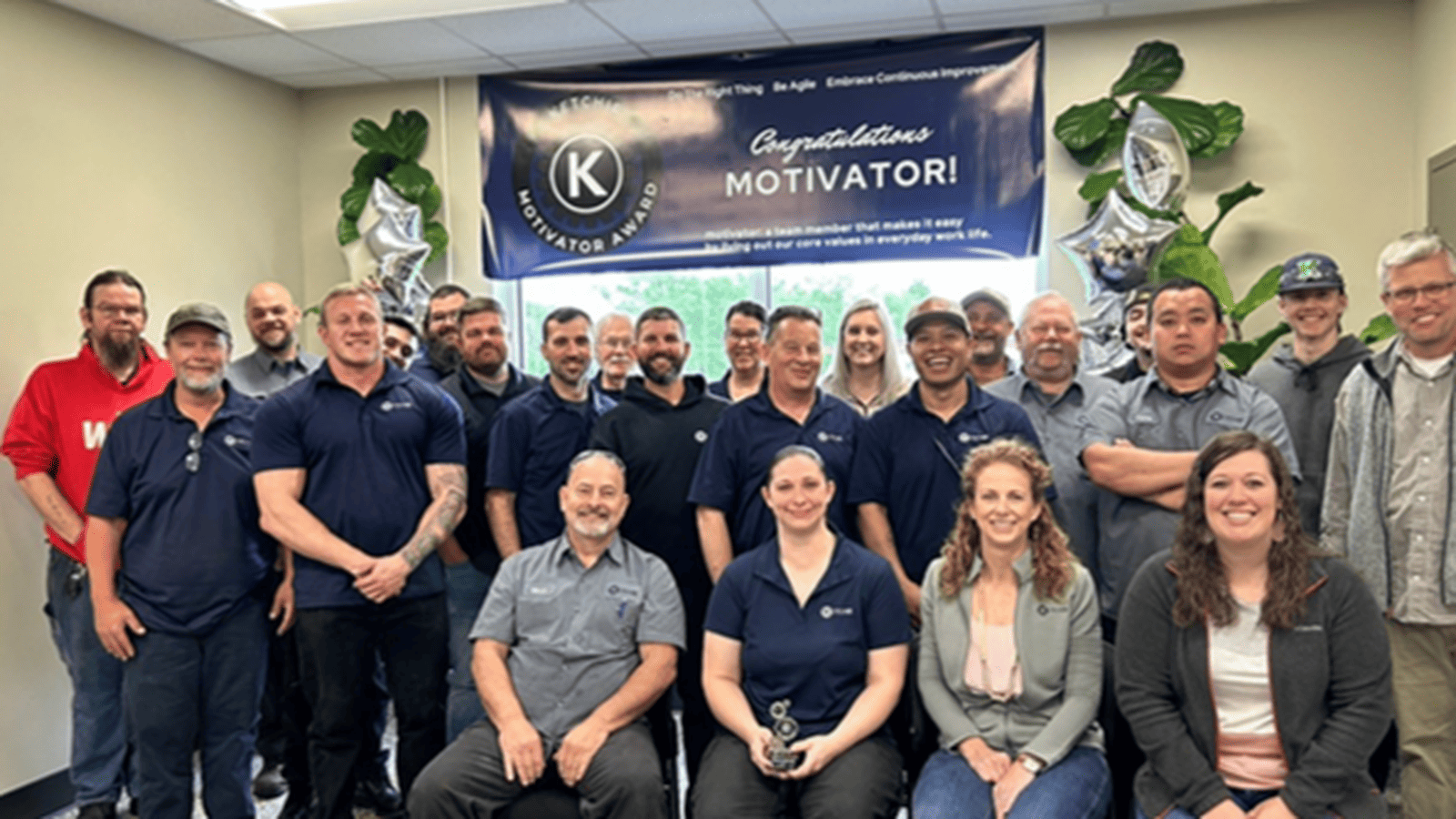
For Ketchie President and Owner Courtney Silver, retention all starts with culture. “I’m really happy to be here” is a phrase she hears often on her shop floor—and it tells her that the work culture at her company is in good shape.
- “A culture of empowerment that’s built on trust really fuels our team I think,” said Silver, who is the chair of the NAM’s Small and Medium Manufacturers Group. “They find so much dignity and purpose in fulfilling our mission here at Ketchie.”
Maintaining a high-performing, motivated and engaged workforce is a top priority for the third-generation precision machine shop in Concord, North Carolina, and Silver has implemented a number of strategies to keep it that way.
Team recognition: Every Wednesday, during Ketchie’s shift meeting, employees have the opportunity to recognize their team members for any achievement, big or small.
- “Recognition can be about anything,” says Silver. “It can be ‘Fred over there was able to cut five minutes of cycle time off this particular part because he changed the process’ or ‘Mary saved us money by switching out some tooling.’ We then post the feedback in the break room and email it out to the entire organization.”
- “There are so many things that can go wrong in manufacturing just trying to get a part out the door, and this is an opportunity to think about all the amazing things we’re doing,” she explained.
Silver also posts worker productivity charts every week. If workers meet their productivity goals and their indirect time goals, they get performance points, which are redeemable for gift cards.
- “I think people want to know if they’re on a winning team,” Silver said. “If you’re winning, it feels good. We’re all on the bus going in the same direction.”
Motivator Award: Each year, employees can also nominate a peer for the “Motivator Award,” which goes to the employee who best exemplifies Ketchie’s core values: to do the right thing, be agile and embrace continuous improvement.
- To honor the winner, Silver puts together a tribute video of team members sharing their thoughts about the employee and hosts a company brunch in celebration (to which the employee’s family is invited).
- “The winner also receives their own special parking spot, an extra day of vacation and a $1,000 gift certificate to the Marriott to take vacation with their family,” says Silver.
- “The team member that won the award last year had tears in his eyes, so I know that it’s been really impactful,” she continued.
Community service: Ketchie’s employees are passionate about giving back to the community. Through service projects, Ketchie supports the Boys & Girls Clubs of America as well as Cooperative Christian Ministry, which offers programs that relieve hunger and food insecurity and address homelessness and housing costs.
Opportunity Knocks: Silver isn’t only working to retain and support current employees, but also to train and mold the young people who will be tomorrow’s machinists.
- This year, Silver started an internship program for high school students named Opportunity Knocks. It allows students to shadow experienced machinists in factory environments while earning school credit.
- The interns go through a curriculum created by Edgerton Gear, Inc., called Craftsman with Character, a 16-week course that helps students explore the role of character in a professional trades environment. Silver said the course, which includes leadership and manufacturing-focused exercises, is taught at Ketchie four days a week in two-hour sessions. Three days of the week are job shadowing machinists on the shop floor, and one day is in a classroom setting at the shop discussing character traits and soft skills. The conversations lean on discovering what’s important in life and what might make them happy.
- “They absolutely love these high schoolers,” said Silver about the two mentors at Ketchie, who each have more than 30 years’ experience. “It gives them an opportunity to share their entire work career: what they’re doing, experiences learned along the way. It’s been neat to see.”
Investing in technology: Silver knows her team wants to work for a company that’s growing and investing in technology. She recently purchased a machine-tending collaborative robot, which takes over machinists’ “least favorite” part of the job—changing parts while the machines run.
- “I interviewed somebody recently who said to me in the interview, ‘It’s really good to see that you want to grow and that you’re making these big investments,’” said Silver. “You’re buying new technology that excites them. They want to be part of that mission and growth.”
The last word: Silver shared some advice for companies that might be struggling with workforce retention.
- “Use employee surveys, focus groups or roundtable discussions to see what you need to do or should do. Everyone wants to be heard. It’s important to listen.”
The NAM’s workforce development and education affiliate, the Manufacturing Institute, has many initiatives to help employers retain and develop their teams. For a deeper dive, check out this study by the MI on improving retention and employee engagement. The MI will also explore retention challenges and solutions at its Workforce Summit in Atlanta on Oct. 16–18. Click here for more information.
Committing to Net-Zero Emissions: Thermo Fisher Takes Action
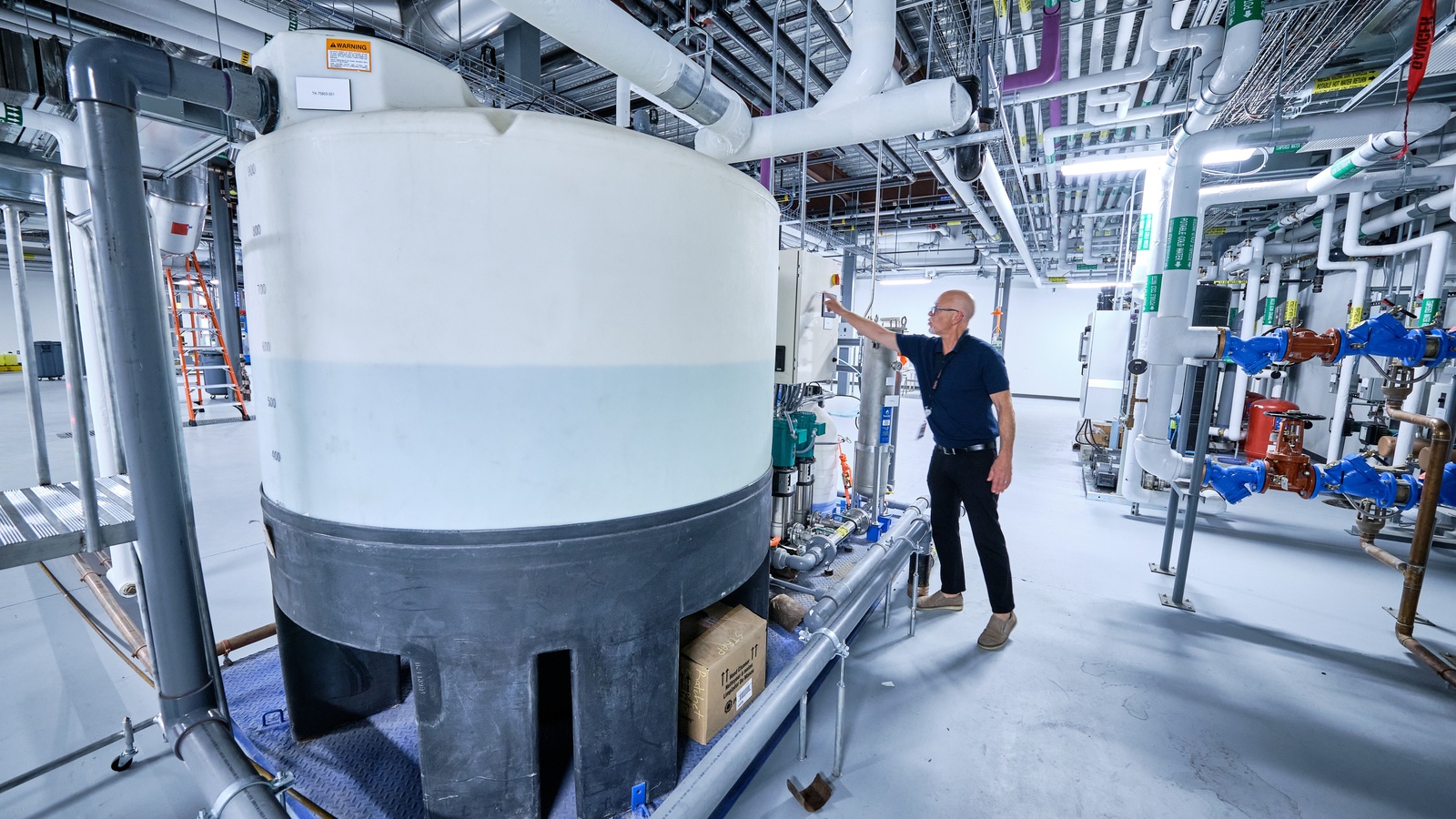
Thermo Fisher Scientific of Waltham, Massachusetts, has made a big commitment to the environment, as well as to its customers and partners: to achieve net-zero emissions across its entire value chain by 2050.
By 2026, thanks to virtual power purchase agreements, all of the company’s current U.S. sites will be running on 100% renewable electricity.
And that’s not all. Last December, Thermo Fisher, a global life sciences leader, announced its intention to slash Scope 1 and 2 emissions—those generated directly by the company and by energy the company has purchased, respectively—by more than 50% by 2030 (from a 2018 baseline). At the end of 2022, the company had already cut emissions by 25%, putting it ahead of schedule.
Environmental sustainability: Thermo Fisher signed on to the Business Ambition for 1.5˚C campaign, which urges companies to reduce emissions sufficiently to cap the global temperature increase at 1.5 degrees Celsius. The campaign is led by the Science Based Targets initiative—the leading global standard setter for private companies’ climate goals—in partnership with the United Nations Global Compact and the We Mean Business Coalition.
- To reach that goal, global emissions must be halved before 2030, and the world must get to net-zero emissions before 2050, according to the SBTi.
- It’s a significant effort, but one Thermo Fisher—which is among the first companies in its industry to have its near- and long-term net-zero goals validated by the SBTi—is glad to take on.
- “Our commitment to the environment is deeply rooted in our mission to enable our customers to make the world healthier, cleaner and safer,” said Meron Mathias, vice president of Corporate Social Responsibility & Sustainability for Thermo Fisher Scientific. “By championing a healthy planet that sustains human health and natural resources, we can build a brighter future for generations to come.”
Making progress: While transitioning completely away from fossil fuels for its operations would require “clean energy technologies that aren’t yet available,” Mathias said the company has made significant recent strides in decreasing its carbon footprint. In 2022 alone, Thermo Fisher:
- Transitioned 20 of its facilities across the globe to operate without the use of fossil fuels (defined as at least 99% of total energy consumed from renewable sources).
- Powered 150 of its sites worldwide solely with renewables.
- Saw 13% of its suppliers (by spend, an industry metric) set a science-based target and another 10% commit to set a science-based target.
Key drivers of this progress include:
- Signing contracts to add 900,000 megawatt hours of renewable electricity to the electrical grid through power purchasing agreements (roughly the amount of electricity needed to power 82,000 average modern homes for a year).
- Purchasing enough wind and solar electricity to fuel all current U.S. sites by 2026, via virtual power purchasing agreements.
- Setting a Scope 3 emissions target to have 90% of its suppliers by spend set science-based targets by 2027.
All hands on deck: Thermo Fisher is also accelerating progress toward its sustainability goals in large part thanks to the company’s Practical Process Improvement Business System, according to Mathias.
- “A lot of our early wins in environmental sustainability have been through PPI,” she said. “For example, somebody seeing waste in the system, or identifying an opportunity to tweak something to make it better for the environment and customers. Our teams are empowered to find a better way every day—for our customers, our business and our planet.”
Make the Most of MFG Day 2023
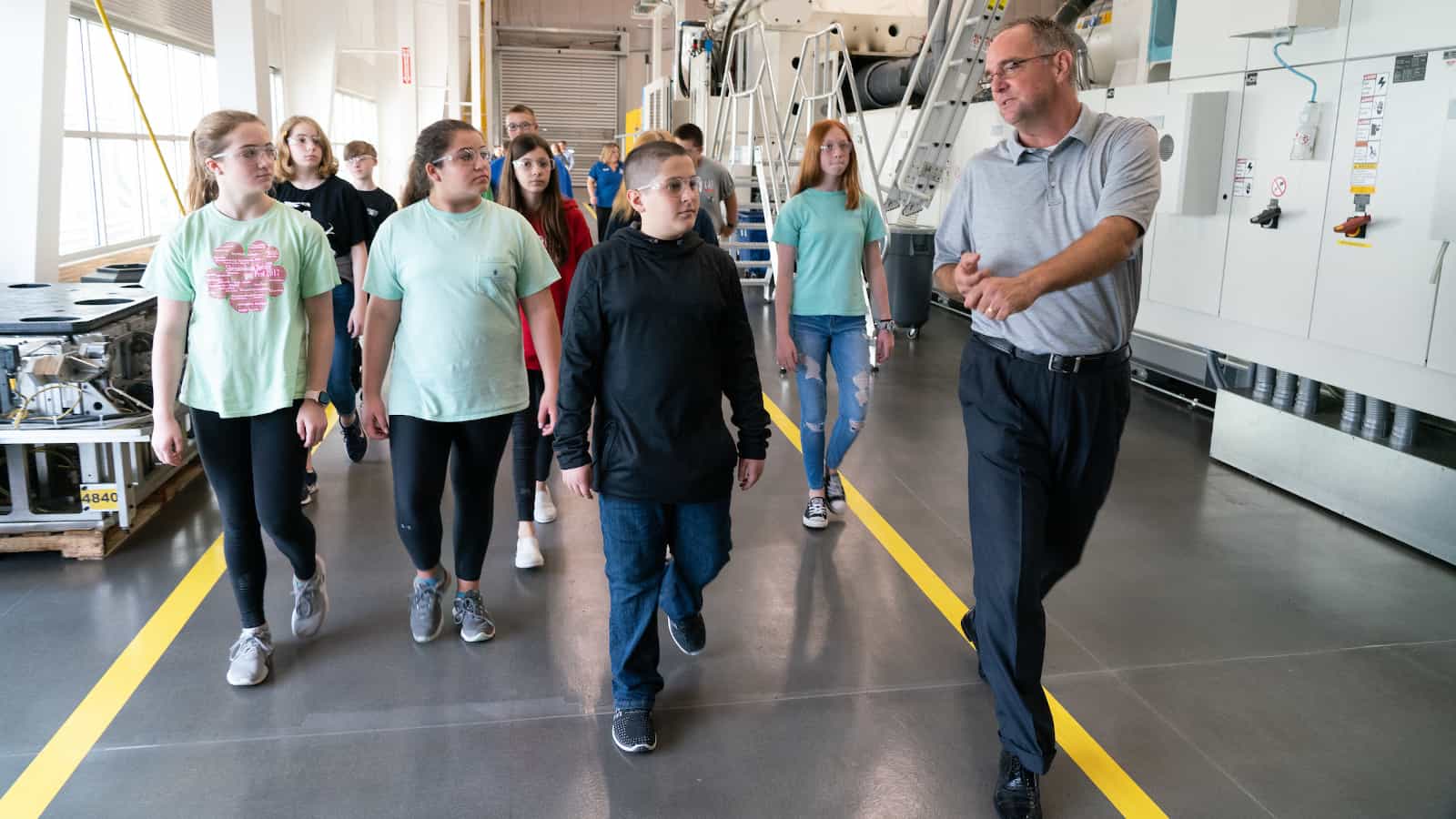
This year’s biggest celebration of manufacturing is coming up soon in October—and manufacturers who want to take part should start planning now.
On MFG Day—Friday, Oct. 6—and throughout the rest of the month, manufacturing companies, community colleges and associations will have their best opportunity to show young people all the industry has to offer them, via factory visits, career fairs and more. So how can companies make the most of it?
Recently, the Manufacturing Institute—the NAM’s 501(c)3 nonprofit workforce development and education affiliate—hosted a webinar to share tips, insights and resources for companies interested in putting on their own MFG Day events.
The participants: The webinar, titled “Making the Most of Your Event,” was hosted by MI Director of Student Engagement Jen White. It included presentations and insights from GenMet Corporation CEO Eric Isbister and American Honda Motor Co. Assistant Manager of Government and Industry Relations Meredith Reffey.
Find your event: Manufacturers can engage in a range of different kinds of events—from career fairs to school visits to challenges and competitions.
- The most common MFG Day event is a facility tour or open house, which allows students, educators and parents to see firsthand the work that manufacturers do every day.
- But whether a manufacturer opens their doors for a tour or designs a “Parents’ Night” for family members, the most important thing is to find an authentic way to connect with community members, the panelists recommended.
- “If you are reaching students and educators, parents, even community members, then you’re … growing awareness of manufacturing and hopefully exciting folks about potentially working in the industry,” said White.
Show yourself: According to Isbister, the first priority of an MFG Day event should simply be to present careers in manufacturing as a viable option for community members.
- “We’ve had over 3,000 students tour here, and our goal … is to let them know that manufacturing exists,” said Isbister. “Most of them don’t, most parents don’t. Most teachers and guidance counselors and school board members don’t have the faintest idea of what we do. And when they walk in the building, their jaws hit the ground, and they’re excited to see things.”
Expand the circle: While engaging students is important, companies should be sure to invite others in the community as well, Isbister said.
- “Don’t just invite students [to your event], but teachers and guidance counselors and administrative people and school board members,” said Isbister. “If you get a student, you got one. If you get a teacher, you got 24. If you get a school board member, you’ve got the person with the pen who can authorize things—and that’s important, too.”
Know your audience: According to Reffey, it’s critical to meet audiences where they are.
- One of the most important lessons Honda has learned from past events is that high school audiences respond well to hands-on activities—particularly those that have an element of competition. By offering activities that the audience enjoys, manufacturers can amp up excitement and promote more engagement.
- “High school students can act very ‘too cool’—but if you set things up as a competition, they break out of their shells,” said Reffey. “Put a racing simulator in front of ’em, they seem to come unglued. They get so excited to participate.”
Get involved: The MI has a range of resources designed to help manufacturers create effective events—and White emphasized that those resources are open and available to all manufacturers interested in using them.
- “Being involved with MFG Day, hosting events, using the branding that’s available on the website, registering your events on MFGday.com and all of our resources and toolkits are 100% free to you,” said White. “You do not have to be an MFG Day sponsor. You do not have to be an NAM member. It is 100% free for you to use. We want as many companies and partners of manufacturers involved in MFG Day as possible.”
Learn more: Manufacturers are encouraged to reach out with any questions to [email protected].
Vulcan Materials Uses New Tech for Direct Air Capture of CO2
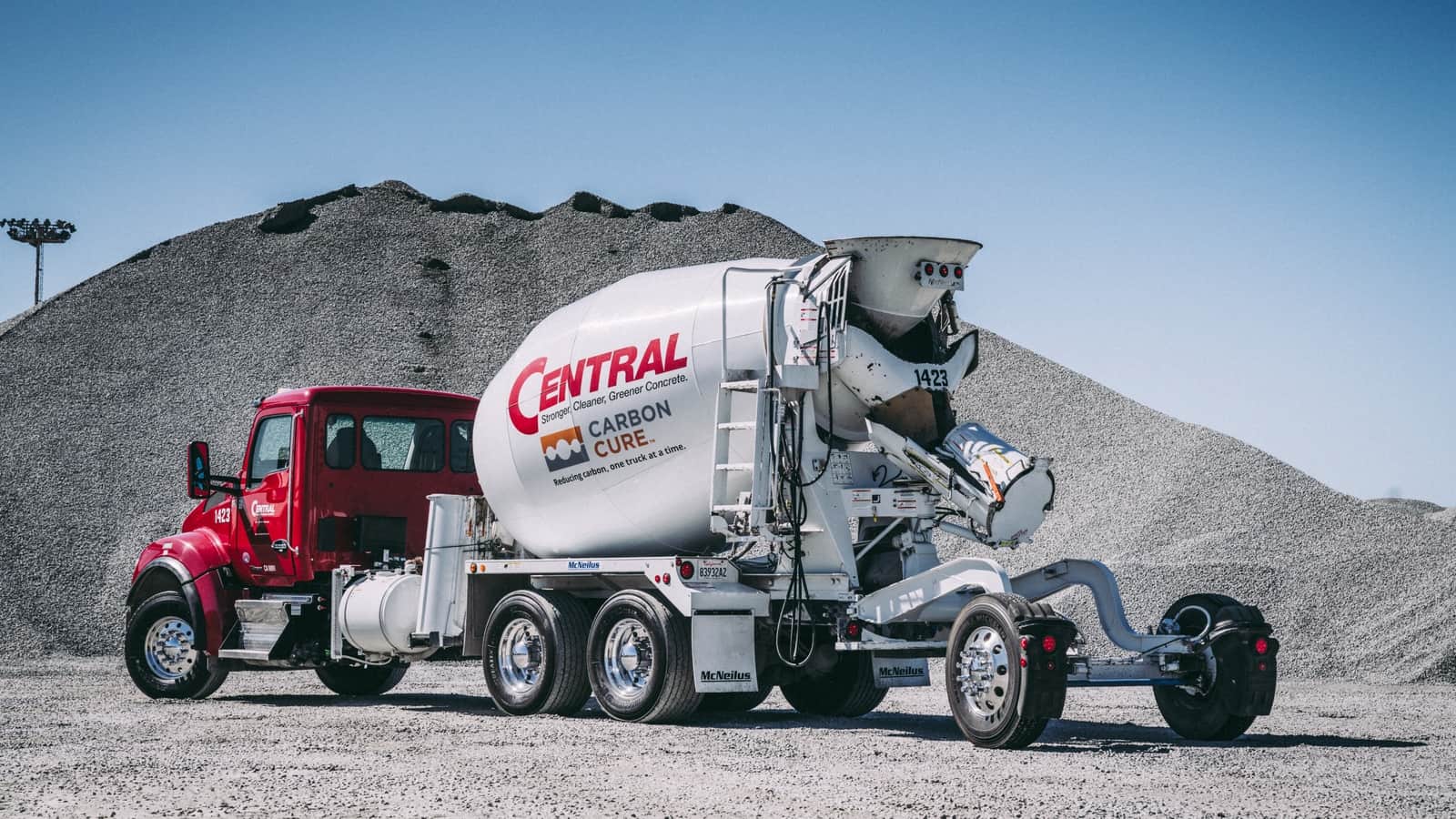
Today’s atmospheric pollution could become tomorrow’s building materials.
In February, Central Concrete, a subsidiary of Vulcan Materials Company, and carbon-removal firms Heirloom Carbon and CarbonCure, achieved an industry first: permanently trapping carbon dioxide from direct air capture in concrete using reclaimed-water technology.
How they did it: The firms took carbon dioxide captured from the air by Heirloom’s technology to a Central Concrete plant, and in a process developed by the Nova Scotia–headquartered CarbonCure, injected it into water that had been used to wash out concrete trucks. That water was then used to make new concrete.
- “Carbon dioxide reacts with calcium ions in the cement mix and turns into limestone—calcium carbonate,” said Alana Guzzetta, manager of Vulcan Materials Company’s National Research Laboratory in San Jose, California. “Once it’s there, it is very stable and stays as that limestone throughout the life of the concrete, even after demolition.”
Why it’s important: “Concrete is the most-used manmade material in the world,” Guzzetta said. “One reason is its versatility. We can take the same core ingredients and get a variety of capabilities and any shape. That’s where the topic of reducing embodied carbon [the greenhouse gases emitted during manufacturing and construction] becomes a big one.”
- The February demonstration captured approximately 66 pounds of carbon dioxide, or the equivalent of a car driving about 75 miles, according to reporting by Reuters.
- The process is also “going to better allow us to reduce the potable water demand,” Guzzetta said. “We’re implementing it and doing testing to figure out the right levels of carbon dioxide [to get] the best reclaimed water consistency, CO2 sequestering and performance with the potential to reduce embodied carbon.”
Sustainability-minded: February’s direct-air capture demonstration is one of many efforts that builds on the company’s decades-long dedication to environmental sustainability. In 2022, Vulcan also:
- Met its goal of securing 5% of all electricity from renewables;
- Supported biodiversity by maintaining projects certified by the Wildlife Habitat Council at 40 sites;
- Sustained a 98% environmental compliance rate across its 22-state footprint; and
- Supplied 2.1 million tons of recycled asphalt pavement and 1.7 million tons of recycled concrete to projects.
Moving forward: Vulcan Materials’ National Research Laboratory continues to test new products and form collaborations with other entities to develop lower carbon concrete and concrete with more sequestered CO2.
- “Any way that we can continue to trap additional carbon dioxide on the production side continues to offer us more ways to do lower-carbon construction projects,” Guzzetta said. “It just keeps moving us forward.”
Anheuser-Busch Supports Partners, Workers
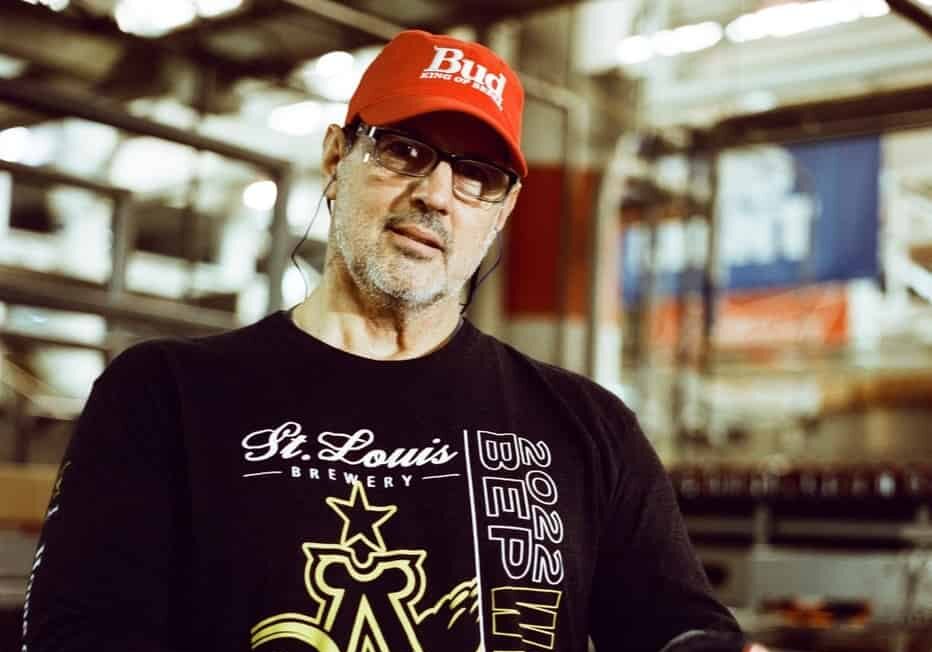
Anheuser-Busch has a solid history of supporting its U.S. facilities and partners, and now it’s expanding those efforts.
What’s going on: The beer giant will give financial and other assistance to its wholesalers, distributors and frontline workers, it announced in a memo and regulatory filing with the Securities and Exchange Commission this month.
- Aid to partners and workers will include wholesaler financial support and sales incentive payments, reimbursements for freight and fuel surcharges and extended lines of credit though the end of the year, as well as financial assistance for local marketing efforts.
“Beer is for everyone”: The financial announcements came just days before the release of Bud Light’s “Easy to Drink, Easy to Enjoy” campaign.
- Other components of the campaign are weekly $10,000 giveaways, Fourth of July weekend rebates and chances to win tickets to local shows in the national Bud Light Backyard Tour, which will feature country music artists Seaforth and Tyler Braden.
Origin story: Today Anheuser-Busch launches its “That’s Who We Are” effort to show where the company’s beers come from and who’s involved in making them. More than 140 growers, employees, wholesalers and other partners participated in the filming of the campaign’s first ad.
The last word: “As we move forward, we will focus on what we do best—brewing great beer and earning our place in moments that matter to you,” Anheuser-Busch CEO Brendan Whitworth said in the memo. “We are a beer company, and beer is for everyone.”
Manufacturers Make Progress on DE&I

Diversity, equity and inclusion efforts have a lot of payoffs: they widen talent pipelines, increase retention rates and improve business outcomes. So what are manufacturers doing to strengthen DE&I in their workplaces? A newly updated survey from the MI and Keybridge has the answers.
What it is: The MI and Keybridge conducted their inaugural DE&I benchmarking survey in October 2021, and manufacturers’ DE&I efforts have grown a lot since then. One year later, the MI and Keybridge repeated the survey, and the results are in—along with recommendations for manufacturers seeking to grow further.
A firm commitment: 72% of manufacturers agreed that improving and maintaining DE&I was a key focus for their company in 2022—and many of them have been taking tangible steps toward that goal.
- Of the 60% of companies that made public statements affirming their commitment to DE&I, most have followed through with diversity commitments, employee resource groups, donations and transparent updates on their DE&I progress.
Widening talent pools: More than 60% of respondents reported that the representation of women within their companies has increased in the past five years. Still, there were also some challenges in expanding the diversity of hiring pools.
- 50% of companies reported struggling with hiring diverse candidates, with 40% struggling with retaining diverse workers.
Where to start: Companies that have not yet taken concrete actions toward fulfilling their commitments can get started by developing a strategic plan or designating a senior leadership position for DE&I issues, the report recommended.
- Another useful tactic is setting up feedback mechanisms for employees, so the company can track its progress on DE&I.
More recommendations: For those further along, the report suggests other moves, including:
- Expand recruitment pipelines by partnering with community organizations, community colleges and technical schools to tap into more diverse pipelines.
- Update position descriptions with language that widens and diversifies the applicant pool.
- Review hiring practices to minimize bias, such as by including blinded resume reviews, standardizing interview questions and employing skills tests and panel interviews.
- Standardize the promotion processes by using the same scoring system and criteria for all employees, seeking input from multiple sources and highlighting clear career pathways.
- Standardize work assignment systems by cross-training workers, to ensure that no one employee is stuck in an undesirable role for too long.
The last word: “The labor market is historically tight, and we know the number one issue for manufacturers is workforce,” said NAM Chief Economist and Manufacturing Institute Center for Manufacturing Research Director Chad Moutray. “Focusing on DE&I is a great way to widen the net and retain the employees that you have.”
NAM Honors Vermeer’s Mary Andringa
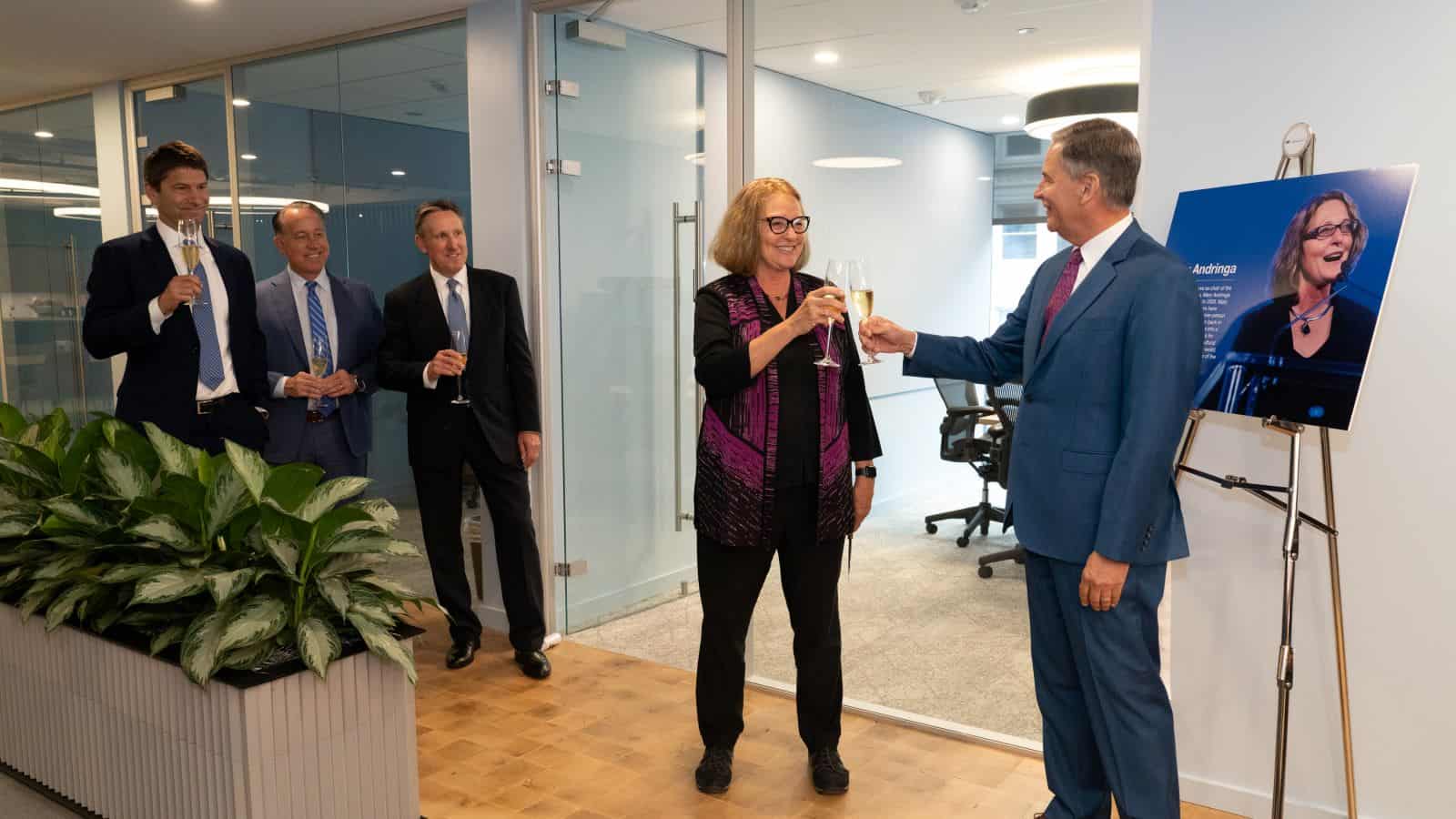
When Mary Andringa arrived at NAM headquarters on Wednesday, she expected a tour of the renovated office. Instead, the former NAM Board chair was surprised by an applauding crowd who gathered for the ribbon-cutting for one of the NAM’s meeting rooms, now named the Mary Andringa Room in commemoration of her decades-long service to manufacturers in the U.S. The NAM’s conference rooms are named for many luminaries of manufacturing, including Andrew Carnegie, Thomas Edison, the Wright Brothers, Jonas Salk and Marie Curie.
“I was absolutely overwhelmed, humbled and honored,” Andringa said.
A longtime supporter: Now chair emeritus of Vermeer Corporation—a family-owned, midsized manufacturer of industrial and agricultural machines in Pella, Iowa—Andringa served as NAM Board chair from 2011 to 2013 and has been an active participant on the NAM Board since the early 2000s.
- Andringa found her experience as NAM Board chair deeply meaningful, remarking on the close relationship she developed with NAM President and CEO Jay Timmons, who was also newly appointed in 2011.
- “It was a really great experience because I had a few years under my belt as CEO [of Vermeer],” Andringa said, “and I could share best practices with Jay. It was great to see how he took initiative and dug into some areas that needed more cooperation, like the NAM’s partnerships with state associations.”
Visiting the Hill: Andringa said she “enjoyed being a voice for manufacturing” in meetings on the Hill and with several administrations.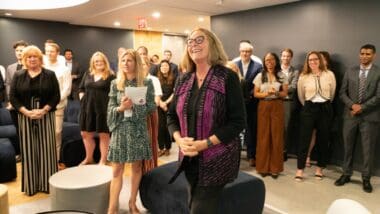
- Whether advocating against compliance regulations that created needless hardship for manufacturers, or for removing trade barriers impeding U.S. exports, Andringa stressed that she always made her case to policymakers on both sides of the aisle.
- “The NAM tries to be the voice of reason. … It has done a good job connecting with both parties and whoever is in the White House,” she said.
- She always felt that policymakers listened to her and took her opinions seriously, recognizing that her privately held, medium-sized company was “what America is all about.”
Workforce, workforce, workforce: The importance of training more skilled workers has remained constant throughout Andringa’s career as a manufacturer and advocate for manufacturing.
- One of the highlights of her time at the NAM, she said, was seeing the rise of the Manufacturing Institute, the NAM’s 501(c)3 workforce development and education affiliate, on whose board she now serves.
- Andringa is impressed particularly with the MI’s stellar outreach, which includes webinars that help manufacturers recruit workers from populations they might not be familiar with, such as people with criminal records.
Her story: Andringa understands the importance of workforce education and training firsthand, having worked as a teacher before joining her family’s company back in 1982.
- After starting out at Vermeer in human resources, then moving to the advertising department, she became deeply involved in manufacturing operations.
- Looking back at her years as COO, then co-CEO with her brother and finally solo CEO, she is proudest of two accomplishments: championing lean manufacturing, which the company has now practiced for 25 years, and working with her family members to create a solid governance structure to avoid the difficult leadership transitions family firms often face.
- And to take things full circle, Andringa also exercised her commitment to education at Vermeer, ensuring that its team members have many opportunities for training and advancement.
Lasting ties: Andringa has many fond memories of her work with the NAM, including the time in 2008 where she and other NAM representatives unexpectedly found themselves talking with President George W. Bush.
- She recalls that Timmons encouraged her to talk to the press afterward, which taught her an important lesson: that you must always come prepared with a short pitch that will get your story across quickly, because storytelling is all-important.
The last word: When asked which accomplishment at the NAM she is most proud of, Andringa responds “encouraging and supporting the NAM team … which is very intentional and very dedicated to manufacturers.”
Manufacturers Should Act Fast on Energy Tax Credits
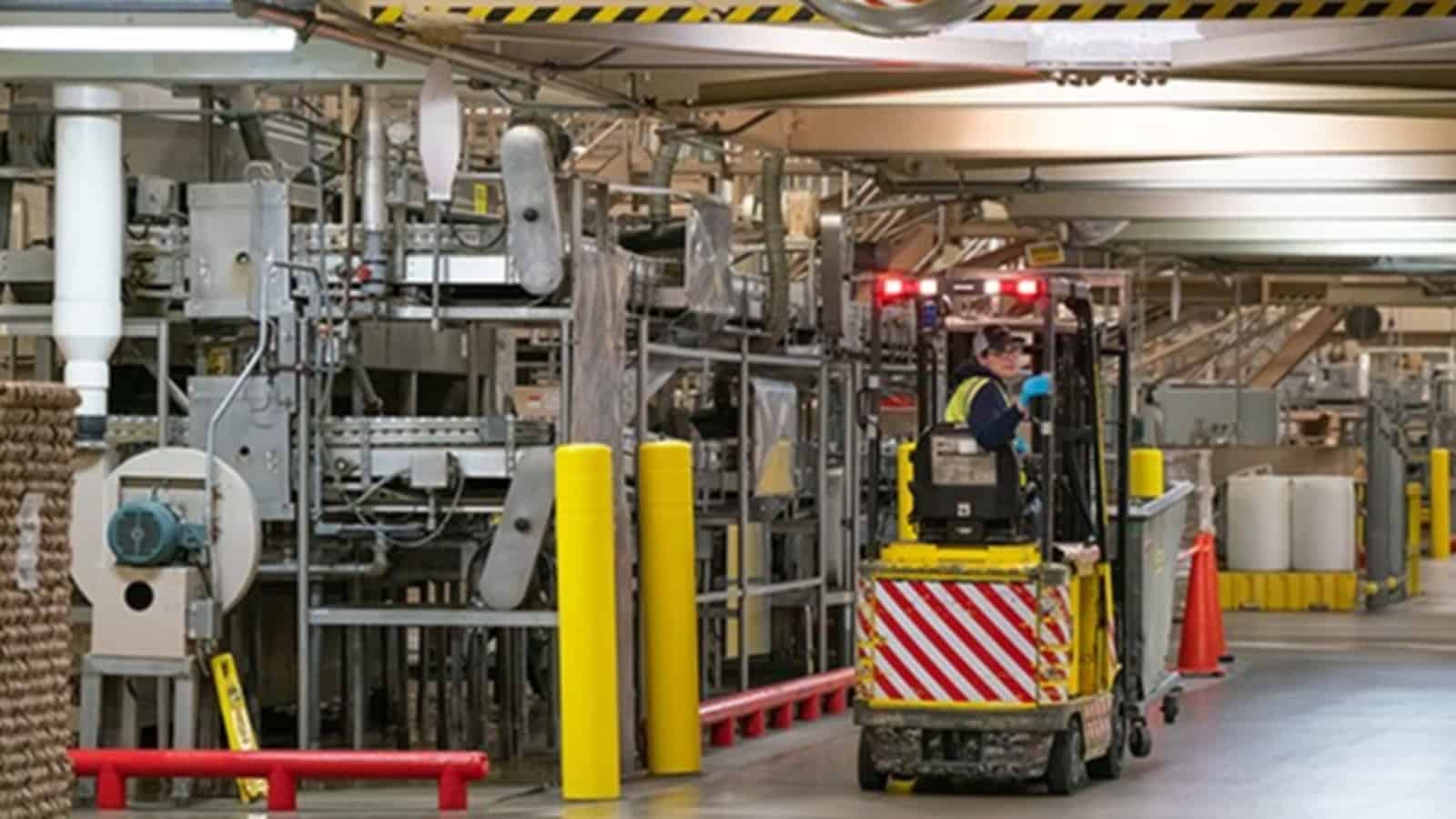
Manufacturers risk losing out on several climate and energy tax credits if they don’t act fast—and will miss an opportunity to save millions.
That’s the message from Brian McGoff, president and chief operating officer of Dalrada Corporation—a manufacturing solutions provider focused on sustainability. The Biden administration and Congress have created additional financial incentives for manufacturers that embrace sustainable practices, but these incentives won’t be around forever.
The benefits: Currently, manufacturers can access a wide range of climate and energy-focused tax credits, grants and other benefits, from new programs and funds created through the Inflation Reduction Act to legacy tax credits like the 179D tax deduction—a provision that was expanded recently to offer significantly more value.
- “If you make qualified upgrades or a retrofits to your existing building or facility, the government used to give you a tax credit through 179D that was worth $1.88 per square foot times your tax rate,” said McGoff.
- “Now, it’s $5 per square foot for projects that meet the prevailing wage and apprenticeship requirements. That’s a direct tax credit—so if you define the project, design it, start implementation and have the proper software to demonstrate the required savings, you can apply.”
- “The lifetime cap on the maximum deduction allowed for a property was replaced with a more favorable three-year cap,” he added. “Companies are allowed to elect an alternative deduction for energy-efficient retrofits in the year the retrofitting plan is certified, to reduce the building’s energy usage intensity by at least 25%.”
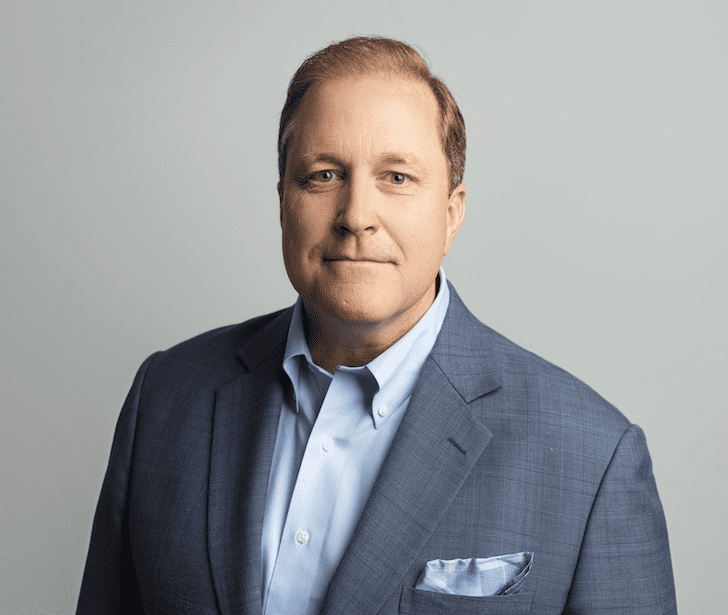
How it works: The 179D commercial buildings energy-efficiency tax deduction primarily enables building owners to claim a deduction for installing qualifying systems in buildings, says McGoff.
- Taking advantage of ESG-related tax provisions doesn’t only help these companies become more sustainable, he explains. It also helps companies save money on upgrades and other infrastructure projects; cuts down costs over time once their operations become more energy efficient; and makes their property more valuable.
- “I can fix my leaky roof for the third time, or I can invest in more efficient lighting, airflow and structural upgrades for rooftop solar and improve my overall energy efficiency,” said McGoff. “I’m going to spend 10 or 50 percent more to do that, but I’ll get significant returns through these grants, tax deductions and benefits, along with direct savings from increased energy efficiency over time. The alternative is you just keep fixing your roof the same way.”
- A few other useful notes: Tenants may be eligible if they make construction expenditures, and in the case of a system or building installed on federal, state or local government property, the deduction may be taken by the person primarily responsible for the system’s design.
The rush: The current value of these credits and opportunities won’t last forever. Several of these programs, including 179D, will have a reduced value after 2024.
- McGoff cautions that the process for planning projects, vetting qualified technologies and applying for benefits takes months. And while the provisions in the Inflation Reduction Act aren’t set to disappear anytime soon, McGoff also notes that there is no guarantee that legislators won’t reduce or revoke the incentives at some point.
- “We meet with companies eligible for programs that would provide close to $3 billion in value, but more than $1 billion of it goes away in December of next year,” said McGoff. “And there’s so much work and labor that goes into creating the right design, implementation strategy and qualifying for these programs that if they don’t get started now, they’re not going to finish in time.”
The last word: “When I talk to companies about taking advantage of these programs, I tell them, you ought to do it right now, because a large portion of the value in these tax credits is going to be reduced in 18 months,” said McGoff.
Related support: Looking to strengthen your bottom line? The NAM Incentives Locator, powered by Atlas Insight, can help determine your eligibility for a variety of benefits. Learn more here.
From JFK to Mother Teresa: The Career of Snap-on CEO Nick Pinchuk
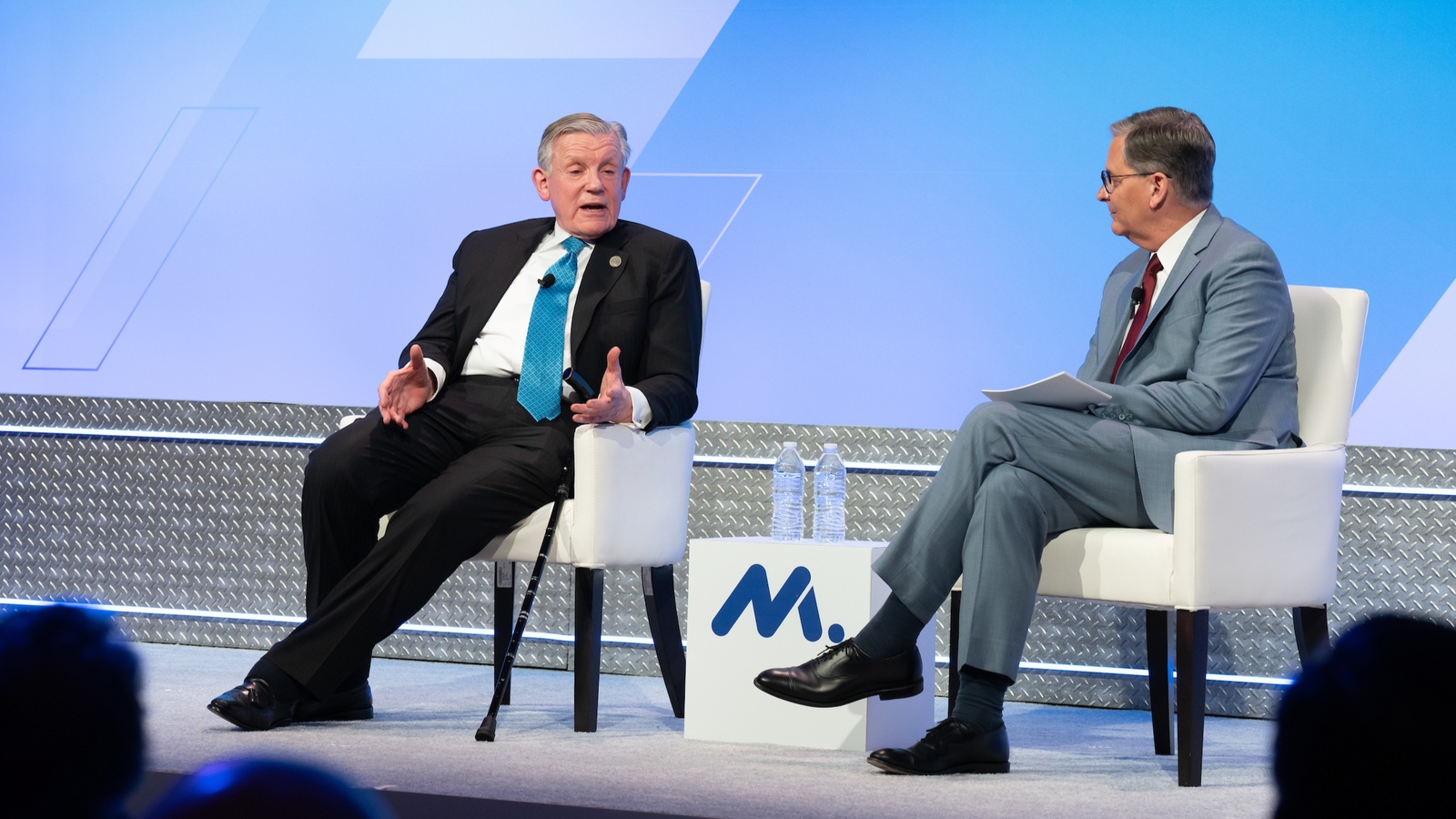
In an interview with Nick Pinchuk, you will start with JFK, meander through Ralph Waldo Emerson and the New Testament, meet Mother Teresa along the way and find out only at the end that he helped send the Viking probe to Mars. And let’s not forget another achievement: he delivered his own child in the backseat of the family car.
The Snap-on chairman and CEO, an executive committee member and stalwart supporter of the NAM, sat down for a very wide-ranging interview with NAM President and CEO Jay Timmons at the NAM’s recent board meeting, at which he received the Manufacturing Icon Award. Here are some of the highlights.
Starting with Kennedy: When asked how he got into manufacturing, Pinchuk cites Kennedy’s 1961 speech promising that the U.S. would put a man on the moon by the end of the decade. Pinchuk was one of the “millions of young people” who pursued STEM careers because Kennedy inspired them, he said.
- He then found himself shipped to Vietnam after a stint in the Reserve Officers’ Training Corps. His experience in the army later helped launch him into management at Ford, when the company was looking for someone who could “run something 24 hours a day”—just as he had in Vietnam.
- He “parlayed” that experience into a business degree, then rose fast in two other organizations—United Technologies and Carrier. His experience in Vietnam helped a second time, leading Carrier to choose him to run its Asia operations.
- Finally, Snap-on came calling, looking for someone with international experience. “On a day in which the board of directors likely had too much wine,” Pinchuk joked, “they decided to give me the CEO job.”
The life lesson? “I probably am sitting here because I went to Vietnam. It could never have been planned.” Pinchuk said. “I’ve made friends in many countries. I’ve opened factories. I’ve met two canonized saints of the Catholic Church and actually a lot of presidents. They weren’t part of a life plan. They were opportunities that arose in which I was prepared and privileged to participate.”
- And here’s another thing he didn’t exactly plan: while driving his wife to the hospital at 4:30 a.m. after she went into labor, he found himself forced to “pull into an empty parking lot and run around, open the door and play catch.”
Purpose: Timmons and Pinchuk discussed the necessity of upskilling the workforce, and in the course of explaining why a sense of purpose is so important to workers, Pinchuk mentioned the time he met Mother Teresa.
- “I talked to her, and she said a bunch of things to me that changed my life. She said, here’s an example that might be useful to you. I was walking down a street with some of my sisters and a beggar got up from the curb.”
- “This was someone I would usually consider to be the subject or focus of my mission to help. The beggar walked over and gave me a coin of little value. And she said, you know why? It’s because he could find respect in the fact that he helped Mother Teresa. Purpose. Purpose is everything.”
On strategy: When asked about his successful 20 years at Snap-on, Pinchuk said, “I believe that an organization’s strategy best emanates from what actually works for it. And so if you understand what works for you, what’s inherent in the DNA and the capabilities of the people, then you say to yourself, ‘Well, that should be my strategy.’”
- “We have people who send me pictures of small Snap-on toolboxes with ashes of their loved ones in them because the loved ones believed that among the most important things in their lives were Snap-on tools,” he continued. “We cannot break that faith.”
- “Therefore, we have to know who we are. And, that is, we are those who give working men and women the means, through the use of Snap-on tools, to declare they’re doing something special and to signify the pride they have in their profession. Making Snap-on worthy of that belief is the core of our strategy.”
The last word: Timmons concluded the conversation by thanking Pinchuk for his support of the NAM and the Manufacturing Institute, saying, “We’re so grateful for your unwavering service to the NAM and your industry. You’re a true model for business leaders in America.”
Manufacturers Find Opportunity in AI

How will AI change the work you and your employees do? The Manufacturing Leadership Council—the digital transformation arm of the NAM—is helping manufacturing leaders figure out the opportunities created by new generative AI technologies, including ChatGPT.
Recently, the MLC held a Decision Compass discussion to help manufacturers learn how to take advantage of these new tools safely and effectively.
The participants: The conversation was led by two members of West Monroe’s Center of Excellence for AI: Ryan Elmore and David McGraw. Elmore and McGraw shared their expertise and addressed questions from manufacturers throughout the call.
The use cases: AI is a diverse and complex tool that is likely to have a lasting impact on manufacturers across the United States. According to McGraw and Elmore, there are a range of applications for the technology, from supply chain optimization and production planning to predictive maintenance issues.
The workforce impact: According to Elmore, AI will also transform the manufacturing workforce.
- Some roles that involve repetitive tasks like data processing could be adjusted or eliminated, while some new jobs will be created around tasks like prompt engineering, which ensures AI programs deliver the most useful and accurate results. Most importantly, however, existing jobs will likely be modified to account for new tools.
- “Some are going to go away, some are going to be created, but the vast majority is going to change mentality, change infrastructure, change the way we work,” said Elmore.
Prompting success: Elmore and McGraw emphasized that the key to using generative AI effectively is developing useful prompts. How you ask AI programs for information, and what data you provide, will determine the quality of the output. They provided a few broad guidelines:
- Keep it simple: Your prompts should be detailed, precise and as succinct as possible.
- Data matters: The better and more detailed your data, the better your output will be.
- Keep it human: Generative AI still requires a human to determine the reliability of the output. Manufacturers shouldn’t plan to use outputs blindly without keeping a human in the loop.
- Share safely: Assume anything you put into AI that is not behind a paywall is not private. Only use data that you’re comfortable with others viewing.
- Follow up: If you receive outputs that don’t make sense, or that indicate some sort of failure, ask the program for more context and problem solving to assess whether the output is accurate or beneficial.
Safety first: AI can also be used in negative ways—for example, by cyber attackers attempting to gain private information from you using software that mimics the voice of someone you know.
- Elmore and McGraw emphasized that manufacturers using AI should consider providing trainings so employees can recognize and guard against safety issues.
The last word: “I think most importantly, you’re only limited to your imagination,” said McGraw. “There’s really a lot of use cases that can be solved with this technology.”
Learn more: Want to find out more about how digital tools are changing manufacturing? The MLC will delve deeper into these issues at this year’s Rethink Summit, taking place June 26–28 in Marco Island, Florida. Learn more and register here.
